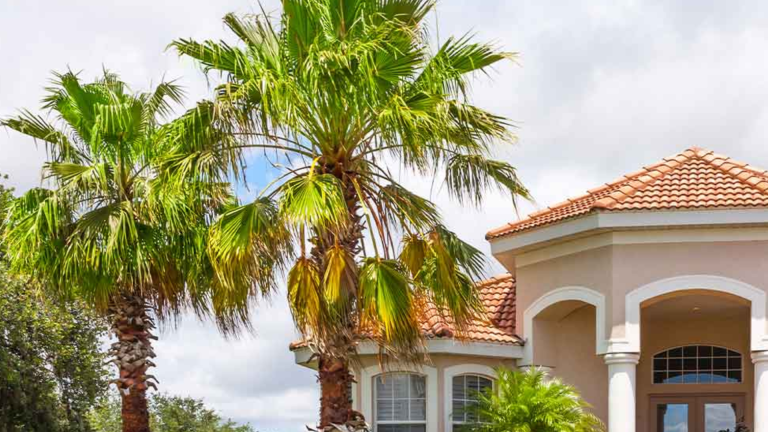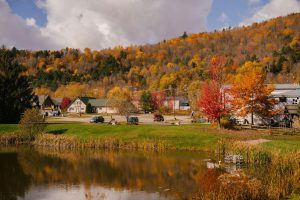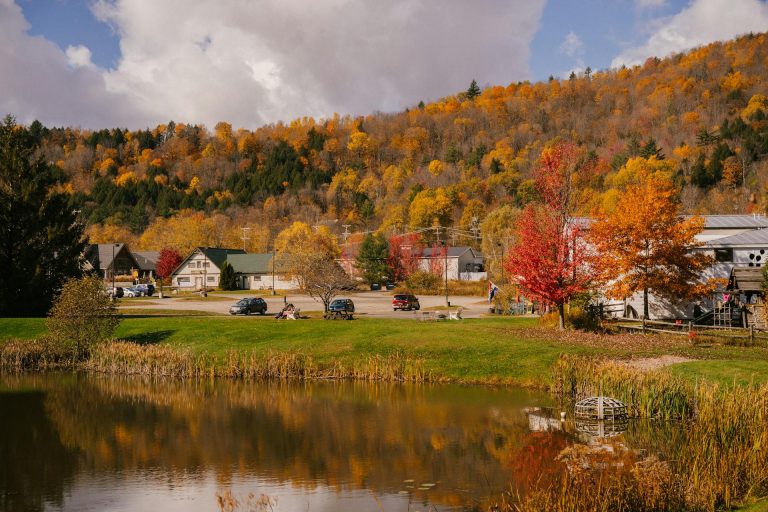Palm trees bring more than just beach feelings to your yard. These tall, striking plants can turn your garden into a little piece of paradise while being easy to care for and useful too!
Are you struggling to find plants that look good and don’t need constant attention? Palm trees might be your answer. My team has studied palm trees for over years, helping thousands of homeowners find the perfect varieties for their spaces.
In this blog, you’ll learn:
- Why palm trees stay green all year
- How they can protect your privacy
- Which types work best in small gardens
- Ways they can boost your property value
Palm trees offer a mix of beauty and practicality that few other plants can match. Let’s look at the top reasons you might want to add these beautiful trees to your garden today.
Benefits of Palm Trees You Didn’t Know About
I’ve spent years studying palm trees, and I’m excited to share what I’ve learned with you. These tall, leafy plants offer more than just looks.
They can make your garden better in ways you might not expect. Let’s break down the hidden perks of having palm trees in your yard.
1. They Stay Green Year-Round
Unlike many trees that lose leaves in fall, palm trees keep their color all year. This means your garden stays lively even in winter months. I love how they maintain their fresh appearance when other plants look bare.
You won’t need to rake fallen leaves either, saving you work during colder seasons. Palm trees give your garden a steady, green presence that keeps your outdoor space looking good no matter the month.
2. They Grow in Many Climates
Palm trees aren’t just for warm places! Some types can handle cold weather too. The Windmill Palm can live in temperatures as low as 10°F. You might be surprised that palms grow in places like Vancouver and London.
I’ve seen them thrive in spots you wouldn’t expect. This means you likely have options that work for your area, even if you don’t live near a beach.
3. They Need Little Water
Once settled in your garden, most palm trees don’t ask for much water. This makes them perfect if you’re busy or live where water is limited. I water mine about once a week in summer and less in cooler months.
You’ll save on your water bill and spend less time with the hose. Their ability to store water in their trunks helps them stay healthy even when the soil gets dry.
4. They Have Strong Roots
Palm trees have special roots that spread out rather than grow deep. These roots rarely damage pipes, sidewalks, or foundations. I can plant them closer to my house than many other trees.
You won’t worry about costly repairs from root damage. Their root system also helps prevent soil erosion on slopes and in areas with heavy rain, keeping your yard stable.
5. They Clean the Air
Palm trees work as natural air filters for your garden. They take in carbon dioxide and release oxygen more than many plants. I notice the air feels fresher near my palms.
You benefit from better air quality right in your yard. They also catch dust and other small particles on their leaves, which then wash away when it rains, helping keep your outdoor air cleaner.
6. They Provide Privacy
Planted in a row, palm trees create a living fence around your property. They block the view from neighbors without looking unfriendly like a wall. I use them to screen my patio from the street.
You can enjoy your outdoor space without feeling watched. Their height and leaf spread work together to shield your yard while still letting breeze and some light through.
7. They Attract Wildlife
Palm trees bring birds and helpful insects to your garden. Their flowers and fruits offer food, while fronds provide shelter. I’ve spotted woodpeckers, finches, and bees around mine.
You might enjoy watching new wildlife visit your yard. This natural habitat helps support local animals and creates a more balanced garden ecosystem without any extra work from you.
8. They Increase Property Value
Homes with mature palm trees often sell for more money. Well-placed palms can boost your property value by 5-10%. I invested about $200 per tree and expect to get that back if I sell.
You make your home more appealing to buyers with these statement plants. Real estate agents often highlight palms in listings since they add instant beauty and character to any property.
9. They Withstand Strong Winds
Most palm trees bend but don’t break in storms. Their flexible trunks and strong leaf stems evolved to handle high winds. I don’t worry when weather reports mention gusts.
You can feel more secure about storm damage with palms than with many other trees. Their ability to sway without snapping means they often survive hurricanes that topple other plants.
10. They Need Minimal Pruning
Palm trees practically groom themselves by dropping old fronds. This self-cleaning feature means less work for you. I only trim mine once or twice yearly to remove brown leaves.
You won’t spend weekends up on ladders with shears. Their natural growth pattern looks good without constant shaping, unlike many shrubs and trees that need regular trimming to stay neat.
11. They Create Cooling Shade
The leaf canopy of palm trees provides shade without blocking all sunlight. This dappled effect helps cool your yard and home naturally. I’ve measured temperature drops of 8-10 degrees under my palms.
You can reduce air conditioning costs by planting them near windows. The unique way their leaves filter light creates cool spots perfect for outdoor seating during hot days.
Tips for Choosing the Right Palm
Not all palm trees are the same. I’ve learned this through years of trial and error in my own garden. You need to match the right palm to your specific situation for the best results.
Know Your Growing Zone
The first rule of palm selection is to check your growing zone. Your local climate determines which palms will thrive. I live in Zone 7b and had to research cold-hardy options.
You should find your USDA growing zone before buying any palm. Most garden centers list the zones on plant tags, making it easy to see if a palm will survive in your area.
Some palms only grow in warm areas like Florida and California. Others can handle freezing temperatures. The Needle Palm can survive down to -5°F, while the Coconut Palm needs constant warmth above 45°F.
Measure Your Space
Palm trees come in many sizes, from small 3-foot plants to giants over 80 feet tall. Think about the full-grown height before planting.
I once bought a Canary Island Date Palm without checking its mature size – now it towers over my house! You should look up, not just around you, when planning.
Width matters too. Some palms spread their fronds 10-15 feet across. Check how close the tree will be to buildings, power lines, or other plants. Indoor palms need space considerations too – a Kentia Palm might grow too large for a small apartment.
Consider Light Conditions
Every palm has different light needs. Most outdoor palms want full sun, but indoor types often prefer indirect light. I placed my Parlor Palm too close to a sunny window and its leaves turned yellow. You should match the palm to the light levels in your specific spot.
Shade-tolerant palms include the Lady Palm and European Fan Palm. Sun-lovers include the Royal Palm and Mexican Fan Palm. Light requirements become even more important for indoor palms since houses typically have less light than outdoors.
Indoor Vs. Outdoor Varieties
Some palms work well inside your home, while others need to be outside. Indoor palms typically stay smaller and handle lower light.
I keep Areca Palms and Bamboo Palms in my living room. You might consider a Lady Palm or Chinese Fan Palm if you want an indoor tree.
Indoor palms need special care like humidity trays and careful watering. Outdoor types generally grow faster and larger. A palm that works indoors in a warm climate might not thrive inside a northern home with dry winter air.
Soil And Drainage Needs
Palm trees have specific soil preferences. Most need well-draining soil that doesn’t stay soggy. I add sand to my palm planting holes to improve drainage.
You should avoid spots where water collects after rain if you’re planting palms outside. Container palms need drainage holes and the right soil mix. Regular potting soil often holds too much water for palms.
A mix with extra perlite or sand works better. Some palms like the Sabal can handle wet soils, while others will quickly rot in those conditions.
How to Care for Palm Trees to Enhance Their Benefits?
Palm trees need less care than many plants, but a little attention helps them grow their best. I’ve learned some simple tricks over the years that make a big difference.
You can boost your palm’s health with these basic steps. Let me share what works to keep palm trees looking good and providing all their benefits:
1. Watering Wisely
New palm trees need regular water until their roots settle in. For the first six months, water deeply twice a week. I use a slow-running hose at the base for 15-20 minutes. You should check the soil moisture by digging down 2-3 inches with your finger.
After the first year, most established palms only need water during dry spells. Too much water can harm them more than too little. Their roots can rot if the soil stays wet. In hot summer months, water once weekly if it hasn’t rained.
2. Feeding Your Palms
Palm trees need specific nutrients that regular plant food might not provide. They especially need potassium and magnesium to keep fronds green. I use a slow-release palm fertilizer three times per year. You should look for fertilizer labeled specifically for palms.
Spring is the best time for the main feeding. Yellowing older leaves often mean your palm needs more nutrients. Brown leaf tips usually point to a potassium shortage. A balanced palm fertilizer fixes both issues and keeps new growth strong.
3. Pruning with Purpose
Only remove brown or dead fronds from your palm trees. Cutting green fronds hurts the tree and slows its growth. I wait until fronds are completely brown before trimming. You risk damaging your palm if you over-prune it.
Many palms naturally drop old fronds on their own. Some types look better with a clean trunk, while others have a natural “skirt” of dead fronds that can protect the trunk in cold weather. Never cut the top off a palm tree – it won’t grow back and the whole tree will die.
4. Winter Protection
In cooler areas, palm trees need extra help during winter. Wrapping the trunk with burlap or blankets helps prevent cold damage. You should focus on covering the growing point at the top of the trunk, as this is the most cold-sensitive part.
Adding a thick layer of mulch around the base helps insulate the roots. Water your palm well before a freeze, as moist soil holds heat better than dry soil. Remove any coverings when temperatures rise to prevent rot.
5. Pest Management
Most palm trees resist pests well, but a few problems can occur. Check fronds regularly for small spots or sticky areas that might signal insects. I spray my palms with neem oil twice yearly as prevention. You can often wash away minor pest problems with a strong blast of water.
Spider mites show up as tiny dots on frond undersides. Scale insects look like small bumps on stems. Both can be treated with insecticidal soap. Healthy palms fight off pests better than stressed ones, so good basic care provides the best protection.
Conclusion
Palm trees offer much more than just good looks for your garden. I’ve grown them for years and find they mix beauty with real benefits. They stand strong in storms, need little water, and help clean the air we breathe.
You don’t need to live in a warm state to enjoy palms. Many types grow well in cooler areas too. The right palm can fit nearly any yard size.
Have you considered which spot in your garden could use a palm tree? Even one palm can change how your outdoor space feels and works.
I suggest visiting local plant shops to see which palms grow well in your area. Native varieties often need less care and support local wildlife.
With minimal upkeep and year-round greenery, palm trees earn their place in any garden. Your outdoor space—and possibly your property value—will thank you!

















One Response
Good information, now how do I stop the bark fom the triming of the tree from falling on the turf after triming? The least wind blowing there are dead twigs every where. How do I fix this? Is there a spray that would stop the falling. Please give me an answer.